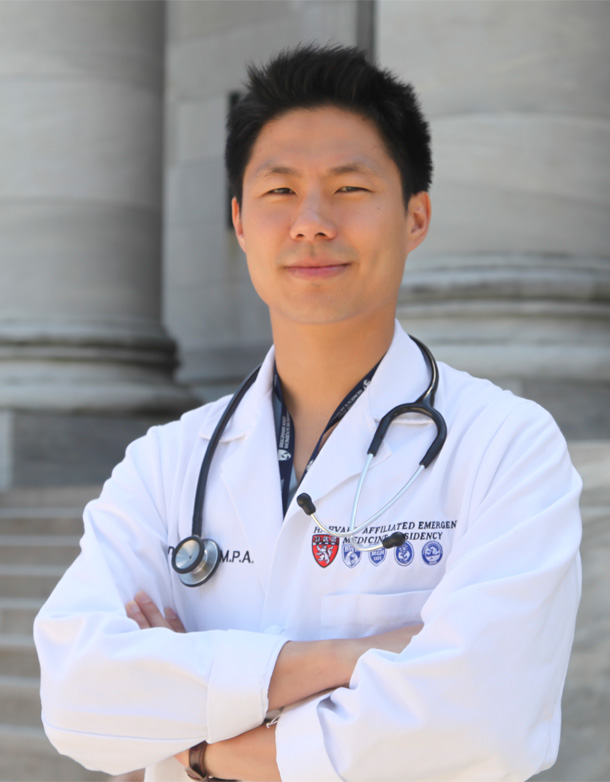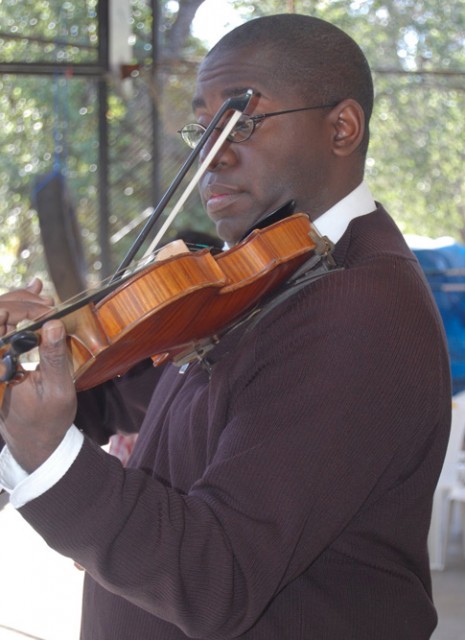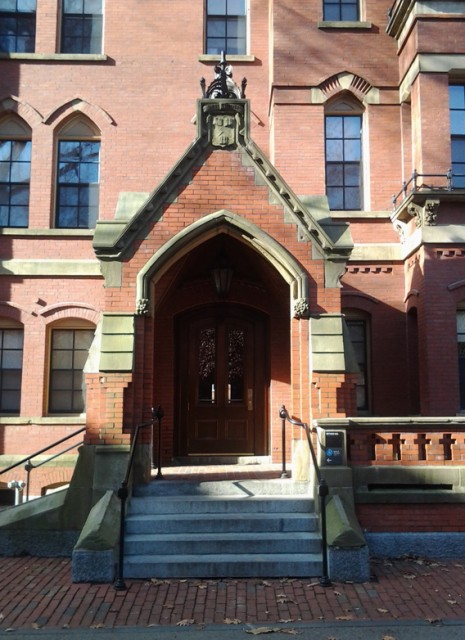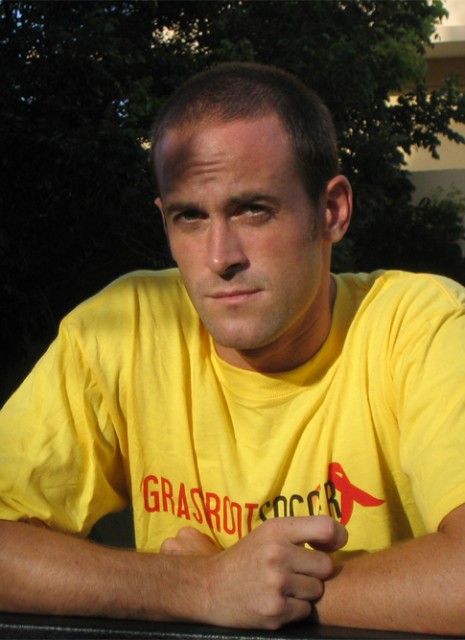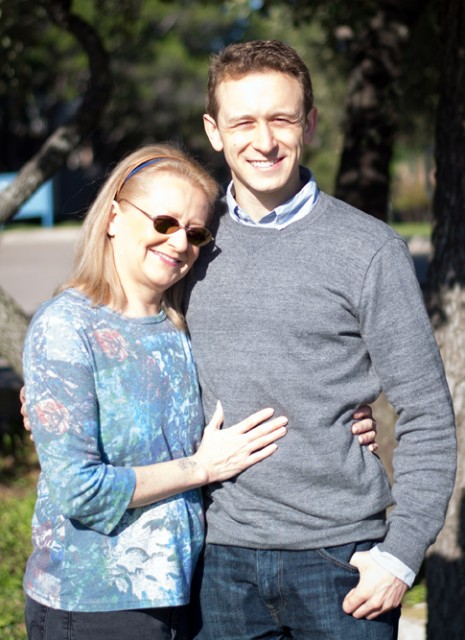Please say your name, where you are from, and introduce your Realm of Possibility Experience.
My name is Jason Ahn. I am from California originally, second generation Korean American, and I am currently a second year emergency medicine resident, as well as the director and creator of the Divided Families film.
Please describe the path that led you to where you are now.
There are a lot of things that led me to where I am, but I guess we can talk about high school. We can talk about growing up in the church, going on mission trips, and seeing differences in standards of living and differences in the way countries are developed, whether it was in my experience in Mexico building a home for a poor family or going to India and seeing extreme poverty. All those experiences at a young age gave me inspiration to want to make a difference in the world. Along with those experiences, going into and in college, I knew that I wanted to study medicine. I’ve taken my college years to study pre-med. I studied molecular cell biology, and I also studied history. And during that time, I studied poetry as well and some medical anthropology.
At that time, my mom showed me a picture of her cousin who was from North Korea and who was trying to make it to the South. That was the first time I knew I had a relative in North Korea. That was the first time I knew that my mom’s mom, my maternal grandmother, was originally from the North, before there was a North or South. I was very interested in my own identity. At that point, I was interested in where I came from and how I got to where I was, through self-reflection and poetry. I also decided that I wanted to go to Korea to research with North Korean defectors who left North Korea and made it successfully to South Korea. I wanted to hear their stories, their journeys, and what their health and access to health was like in North Korea and as refugees in South Korea.
While I was there, I was fortunate to get a Fulbright Fellowship to go to Korea. While I was there, I met a bunch of colleagues and friends who were doing similar work in terms of social activism through film, art, and media. Before coming to medical school, that’s when I thought we should do something about divided families. Learning about my own family’s history, I got interested in the divided families issue, and I also realized that there were more families of Korean descent in the United States that had relatives in North Korea and that their last wish was to go and see them or hear about what happened to them. That was my grandmother’s wish. Unfortunately, she hadn’t been able to make that happen before she passed away, and she was going up against deeply rooted geopolitical forces that hadn’t allowed her to meet her younger sister before she passed away. So combining all those things, I thought we should make a film to raise awareness about the Korean American divided families issue, but I was still on the path to medicine, so I guess much of the past five years has been a parallel story between medicine, my interest in global health, and my interest in wanting to make a difference. Being a positive active agent of change for the poor, as well as pursuing this personal project of passion, I call the film Divided Families.
Here I am now, done with medical school, and I went to the Kennedy School to learn more about public administration, public policy, how to manage things as I was trying to do that with the film, and how it will all fit into the bigger picture of activism and advocacy. I graduated from Harvard Medical School, at Harvard Kennedy School, in 2012. I’m now a second year emergency medicine resident at National Hospital and Brigham and Women’s Hospital.
Please describe the organization with which you worked.
I started the Divided Families film project in my second year in medical school, which was 2008, I believe. It was a pretty intense time because we were studying for our USMLE Step 1 Board Exam, but this issue of families just kept coming back to me. I kept thinking about it. I felt I needed to do something about it and have a small contribution. I got my friends from the Fulbright Fellowship to come, and I did some research about the topic. I remember going to Countway Library, getting this book about divided families that was in English. I read through it all while studying cardiorespiratory pathophysiology. I remember scanning the book into a PDF file. I did a lot of research on the history of the issue, but there really wasn’t much research on Korean Americans. There were a lot between North and South Koreans, though.
So I did the research, and I got connected with an organization called Saemsori at that time, which was trying to advocate for divided families and reunions between Korean Americans and North Koreans in Washington, DC. They already had an organization that was doing this, and I got connected with their spokesperson, Cha-hee Lee Stanfield, who was an amazing person. Senator Mark Kirk called her “a dynamo of energy” who had continued to work on this issue for a long time. I got connected with her, and then I got connected with some other divided families who do that organization. I came up with a list of questions that I wanted to ask them. In our interviews, I got my friends from the Fulbright to film the thing. We went to New York, had some preliminary interviews, and then another friend of mine from the Fulbright edited a two-minute clip. Then, through some other friends, I met Eugene Chang, who was my partner in the project, and we decided we needed to raise some money to film this thing. So we raised money.
I had a huge fundraiser—huge to us—in New York. That was June 25, 2009, and the only reason I remember the date is that June 25 was the historic start of the Korean War in 1950. It’s funny because that was actually the day Michael Jackson died, so people were talking about that during our fundraising. Anyway, we were able to raise tens of thousands of dollars, and we were ready to make the film. We did a lot of research on who we were going to interview and what the storyline was going to turn out to be. You can’t predict all of that in a documentary, but you go in with having a decent idea what you want to get. Then we recruited a bunch of volunteers, to either film, to translate, to transcribe interviews, or to help with editing for the website. Bum Lee is amazing; he edited a lot of the film for a lot of our events that we were trying to put on to raise awareness. We also had people like Jieun Baek, who did such amazing work in rallying around this issue and getting people inspired and excited about it.
We’ve come a long way. We’ve had multiple screenings of our edit along the way because we want to raise awareness. We had our first screening at the Harvard Kennedy School while I was a student there. We had a screening in UC, San Diego. We had one in Korea on a Fulbright. We had one in the Dirksen Senate Building through Senator Kirk’s office. And we’ll continue to have screenings to raise awareness. We’ve interviewed nearly 20 people for the film. We’ve raised nearly $50 thousand to $60 thousand to make this happen. We’re just about to finish, so it’s been a labor of love and a test of endurance, but it’s almost there.
Our mission for thinking about a film was the whole point of it. When I first thought of it, one, we can record the history because these stories are so rich and they’re not told so much. I guess in my family experience, it’s not a very open culture of sharing their feelings, their hurt, and their pain. But some families, they may have shared their stories to the coming generations, but I wanted to record the history, for the record. I think that, in and of itself, is important. Then the second part of the mission was to raise awareness, which we’re going through the events that we put on and hopefully through the distribution of our film. The third was to advocate for reunions so that this film could get people interested in the issue and stir up our voices in a democratic society and to help advocate for this generation. That’s the three-part mission of our film.
What problem or challenge did you address during your role?
The problem or challenge that I tried to address in my experience has been again: (1) to record the history of Korean American divided family members, as it is very much a Korean experience but also an American experience as we’re all part of the United States; (2) to raise awareness about the issue; and (3) to advocate for their reunion. I didn’t realize how difficult it would be to make a decent film, but I think we’re there. I think we have an awesome film coming out, and through the film, we’re trying to address those three issues.
Why is this problem or challenge important?
This problem or challenge is important because I believe that everyone has or should have the right to freely see their families, or any loved ones for that matter, and that shouldn’t be hindered by political boundaries or borders in such a connected era through the internet, video chatting, and emails. It boggles my mind that a country such as North Korea controls its populations. It controls information flow within its borders. I think it’s important to all of us, because we could all empathize with having a family and experiencing love, joy, and frustration with families of our own. But we all seem to have the right to go opposite them, have a phone call, phone conversation, or send an email or text. If that right is taken away, like it has been for over 60 years for this generation of Korean American divided families, who’s to say that it won’t happen to another group of people in the future? I think it’s important for everyone to be at least cognizant of the issue and to do what they can to help find a solution for the problem.
Please suggest media or resources that will help people explore this problem or challenge.
People can visit our website, www.dividedfamilies.com, or facebook.com/dividedfamilies. They can see a few clips of our interviews that we’ve done with divided family members, and they can also read about our project. There’s another group that Cha-hee Lee Stanfield created, and there’s a good record of information there. You can visit their website at www.dividedfamiliesusa.org. You can also visit Saemsori’s website, www.saemsori.org, and that’s a very good starting point if you are interested. There’s also a book that talks about Korean divided family members. It’s called Korea’s Divided Families: Fifty Years of Separation by James Foley, and that’s a really good book to read.
How did you create value for the organization where you worked?
I guess if I didn’t create the organization, it wouldn’t be there. If I didn’t create the film, it wouldn’t be there. And if I didn’t have a team behind me all along the way, it wouldn’t have happened. We have an awesome team. We also have donors and supporters, and if it weren’t for that mosaic of people, the project wouldn’t have come as far as it has today.
Please give a sampling of what you did on a day-to-day basis.
It really depended on what phase of production we are in. In the pre-production stage, I was doing a lot of research and reading about divided families issue through books, articles, and online resources. We’ve created relationships with people who are already working on this and created relationships with reporters and divided family members. We’ve looked for the people we wanted to interview for the film. We’ve recruited a team to do fundraisers, a team to do the filming, to do the interviews, to plan the production, plan out the travel, how we are going to pay for it, what our budget is, how we are going to save money by taking which car down, what to wear, food, lodging, and all the nitty-gritty details. We had to work that out. That was the pre-production stage.
We had a couple of phases of production, which was to actually go and meet with Cha-hee in Chicago and interview her with the divided families that she had been working with. The production was very exciting. It was a lot of fun. It’s very tiring travelling and interviewing people, divided families, professors, and politicians.
In the post-production phase, it’s been less relation on a sense of a day-to-day basis—getting a team to translate and then transcribe our interviews, raising money for the post-production phase to get and pay an editor, as well as the sound and music, and color and effects. It’s a lot of emailing. It’s a lot of looking at the footage. It’s been a lot of fundraising. We did a kickstarter, which was successful. It’s been a very dynamic process. It hasn’t just been one type of task; it’s been problem solving all along the way and figuring out what we needed to do at that point and getting it done.
What skills were most valuable to be successful in your role?
A lot of skills. One of my advisers to the film, Grace Yu, said in the very beginning, “Making a film is 90% people management.” And it’s really true. Another valuable skill, I think, is learning how to interact with volunteers, to inspire others to jump on board to the project, to understand people’s strengths, to match the interests and skills of the volunteers or whoever wants to help out, and to kind of have an open-door policy of folks to just come and join the project whenever they could. If they needed to move on, they’d move on. We’ve had about 60 volunteers at a certain point along the way to work on the film. It’s also building trust with the organizations that we partnered with, and also building trust with our interviewees, the folks who are actually affected by this issue, the people who actually lived this experience every day. Again, all of that was interpersonal relationships, and I think that’s probably the most important skill to have to be successful in my role.
With whom did you collaborate to address the problem or challenge you worked on?
We collaborated with an organization called Saemsori. We collaborated with Cha-hee Lee Stanfield, who started her Divided Families USA organization, which was a coalition of groups that support Korean American divided family members. I collaborated with Senator Kirk’s office in organizing a screening of our film. We collaborated with a lot people. Each person who volunteered their time to talk with us or to be filmed and interviewed is a collaboration. Stephan Haggard, who is a professor at UC San Diego and a North Korea expert, I would consider that a collaboration. We collaborated with the divided families themselves and just a global network of volunteers.
There was this one person, Ki Jang Man, who somehow found my email and said she was interested. At that time, we needed a team of transcribers and translators, and I asked her if she was interested. She single-handedly recruited another handful of her cadre of friends or folks who are interested, and they transcribed and translated our interviews. And this was all done remotely because she was in Korea. I have never met her in person yet, but we’ve met on Skype and have had this wonderful collaboration.
How did you arrange your role?
I think having a physical sponsor was one of the first steps, and arranging this experience kind of legitimized our fundraising efforts. Having a website also legitimized what we are doing. And those were very accessible for our folks.
What was unexpected about your role?
There were so many things that were unexpected, so many bumps on the road, so many hurdles to jump through, so many specifics and details to hammer out that I hadn’t really anticipated. I didn’t expect for it to take so long to finish. I didn’t expect that so many people would be so supportive of what we were doing, so those were awesome serendipities that happened.
What are the big takeaways from your experience?
I think, on a personal level, the big takeaway from the experience was perseverance and endurance. I believe that, with any endeavor, if one chooses to embark on with persistence, it will get done; and without it, it won’t. I think that was a big lesson that I learned. Just hearing and recording divided families’ stories, I felt like I could empathize more with that generation. I came to appreciate what I have now through their sacrifice, their pain, and their suffering. I love speaking with folks who are wiser and older than I am, because I feel like I can learn from their experience, and I very much did that through speaking with 90-year-old divided family members. I’m coming to appreciate my own family even more than I have before. Other big takeaways: friendships that I’ve built along the way, this feeling and idea that we could really make this happen with perseverance and dedication. All of those things have been major takeaways.
What advice do you have for people seeking a similar role?
The advice that I have is to find mentors who can lead you down the right path, where you can learn from their experiences so you don’t have to reinvent the wheel. Another is having the courage to make your own experience, to create something that you feel passionate about, and to think through exactly what you need to do to make it happen. I think having that combination would be paramount to success.
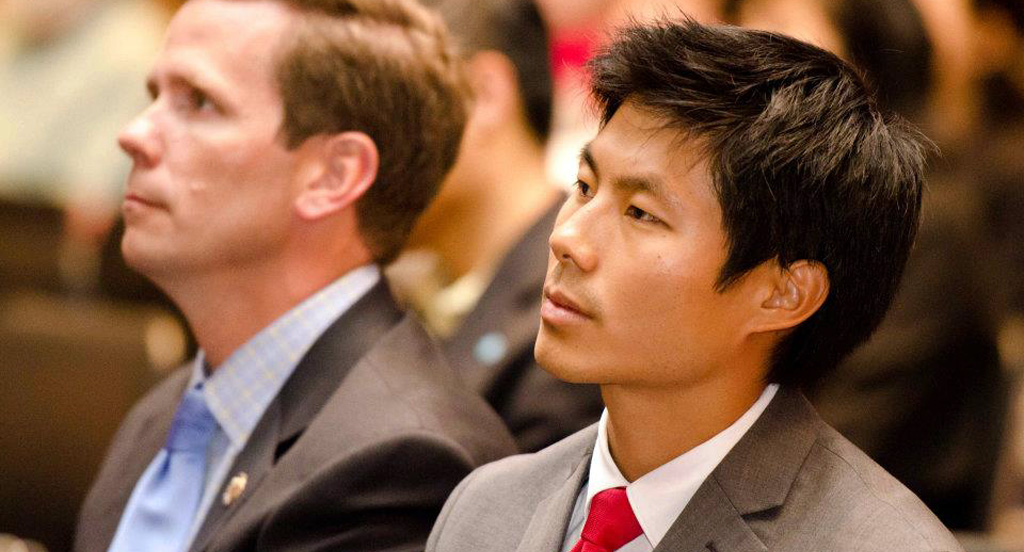


| 1 | Jason Ahn 1 - Please describe who you are, where you are from, and your current role. |
| 2 | Jason Ahn 2 - Please describe the path that led you to where you are now. |
| 3 | Jason Ahn 3 - Please describe the organization with which you worked. |
| 4 | Jason Ahn 4 - What problem or challenge did you address during your experience? |
| 5 | Jason Ahn 5 - Why is this problem or challenge important? |
| 6 | Jason Ahn 6 - Please suggest media or resources that will help people explore this problem or challenge. |
| 7 | Jason Ahn 7 - How did you create value for the organization where you worked? |
| 8 | Jason Ahn 8 - Please give a sampling of what you did on a day-to-day basis. |
| 9 | Jason Ahn 9 - What skills were most valuable to be successful in your role? |
| 10 | Jason Ahn 10 - With whom did you collaborate to address the problem or challenge you worked on? |
| 11 | Jason Ahn 11 - How did you arrange your experience? |
| 12 | Jason Ahn 13 - What was unexpected about your experience? |
| 13 | Jason Ahn 14 - What were the big takeaways from your experience? |
| 14 | Jason Ahn 15 - What advice do you have for people seeking a similar experience? |
| 15 | Jason Ahn 18 - What are some of your personal interests? |


